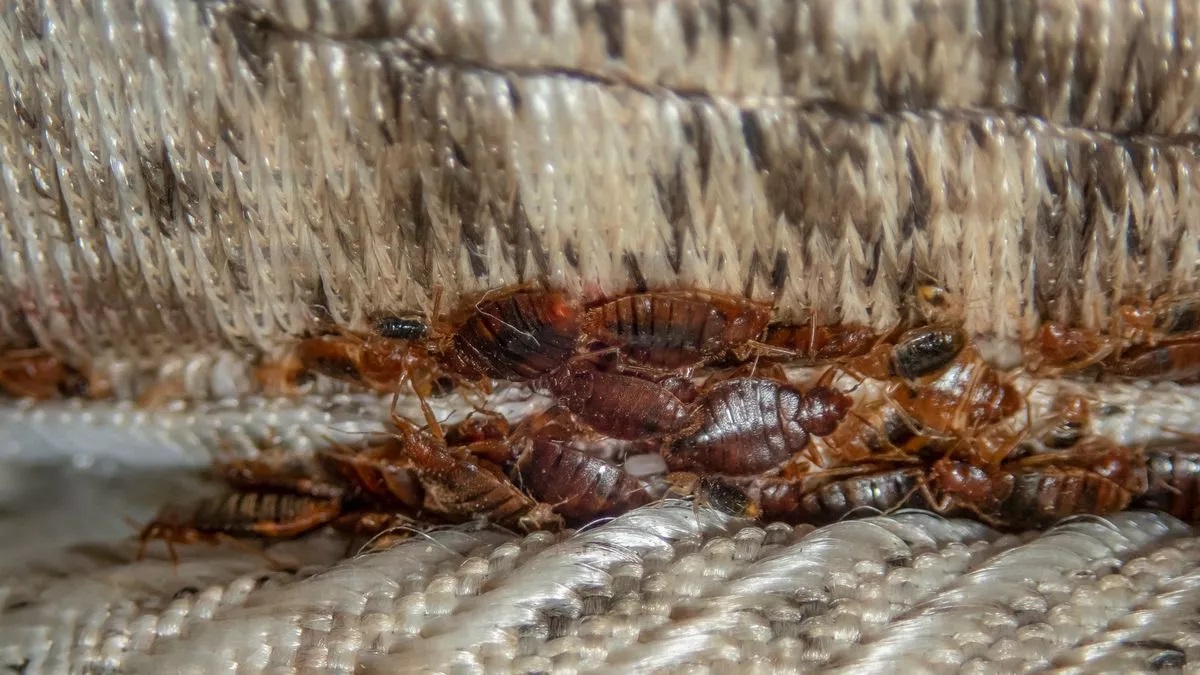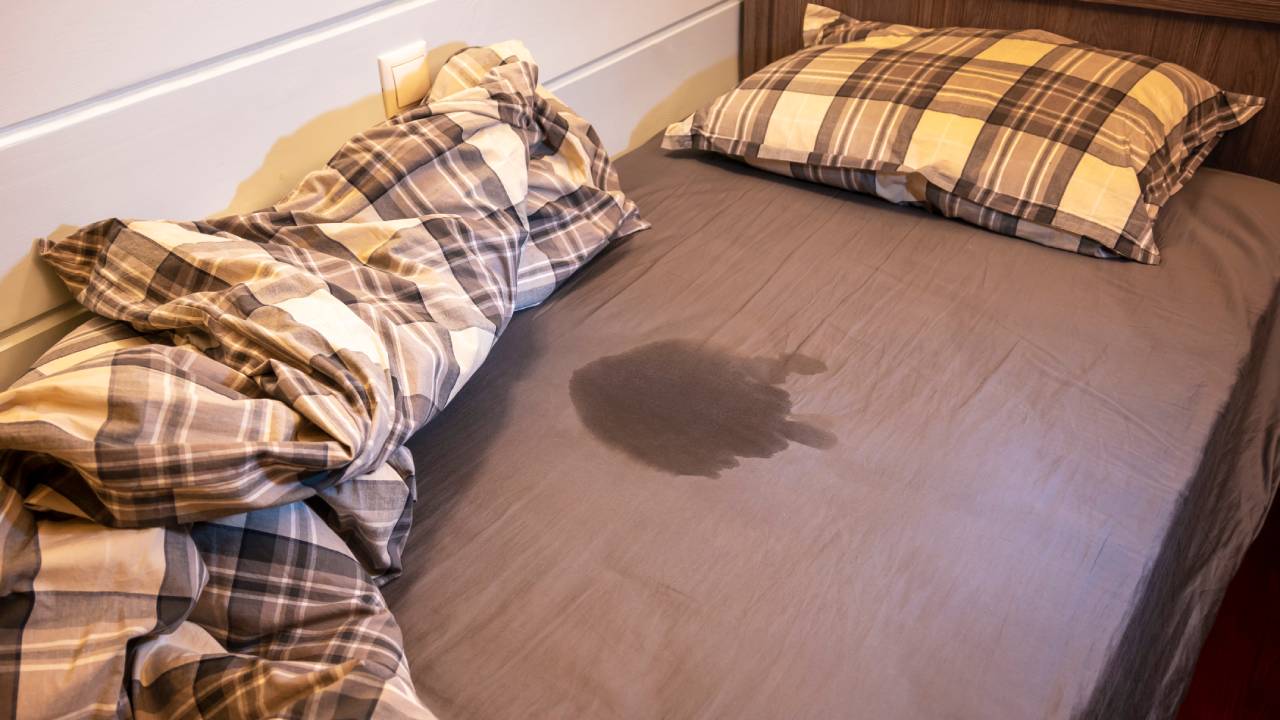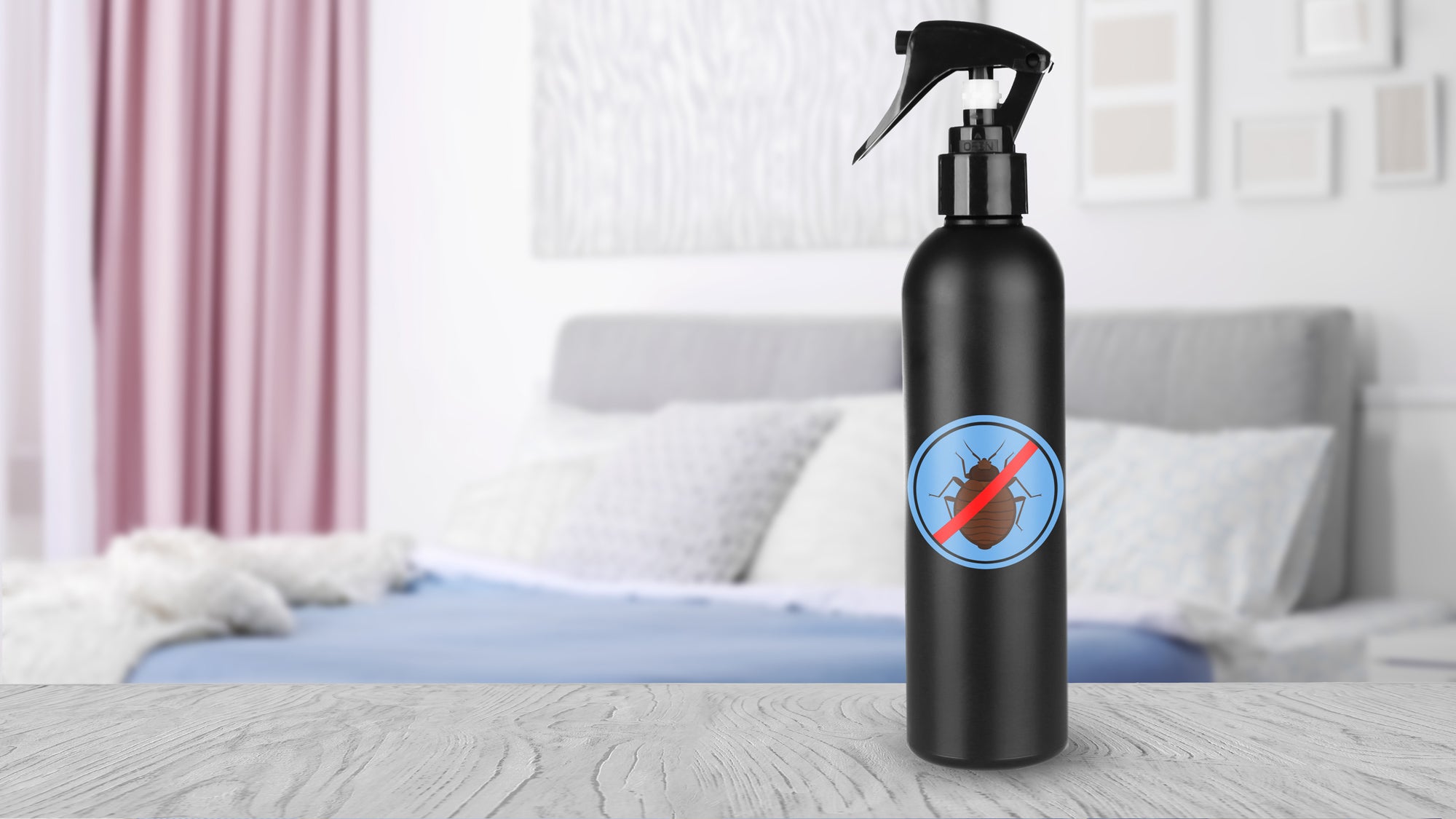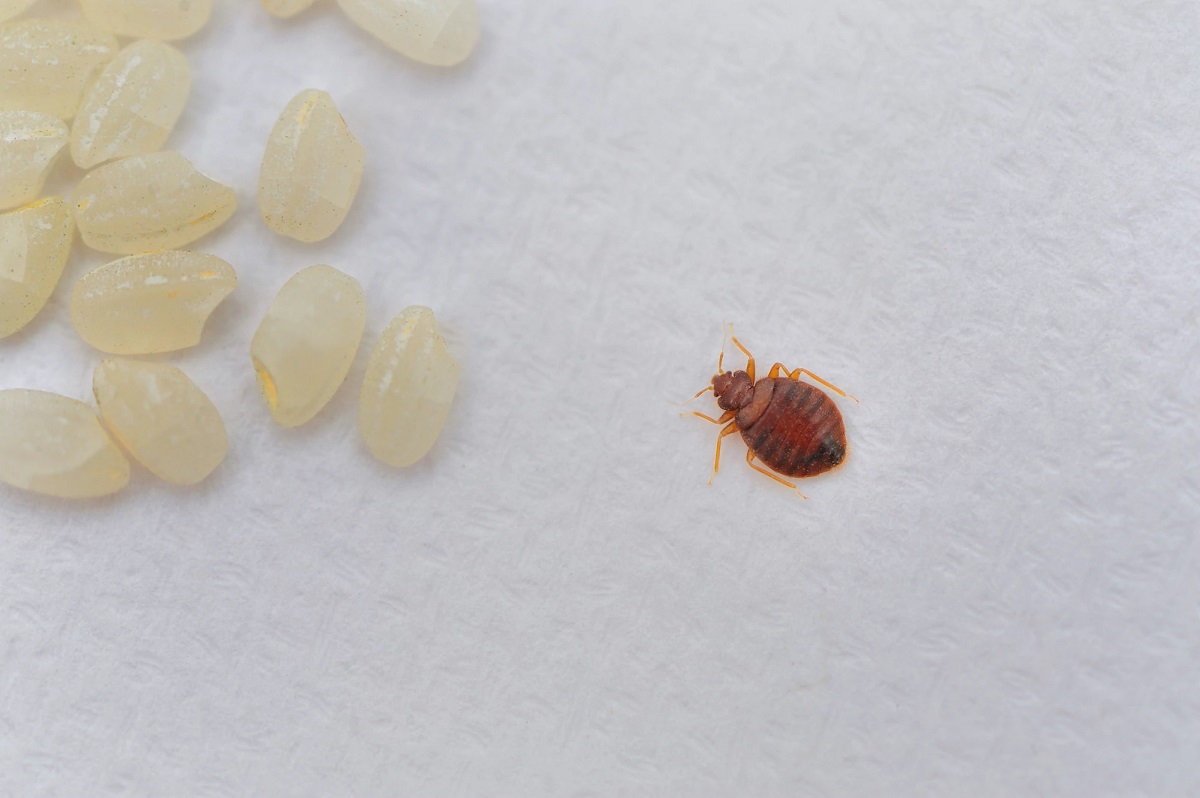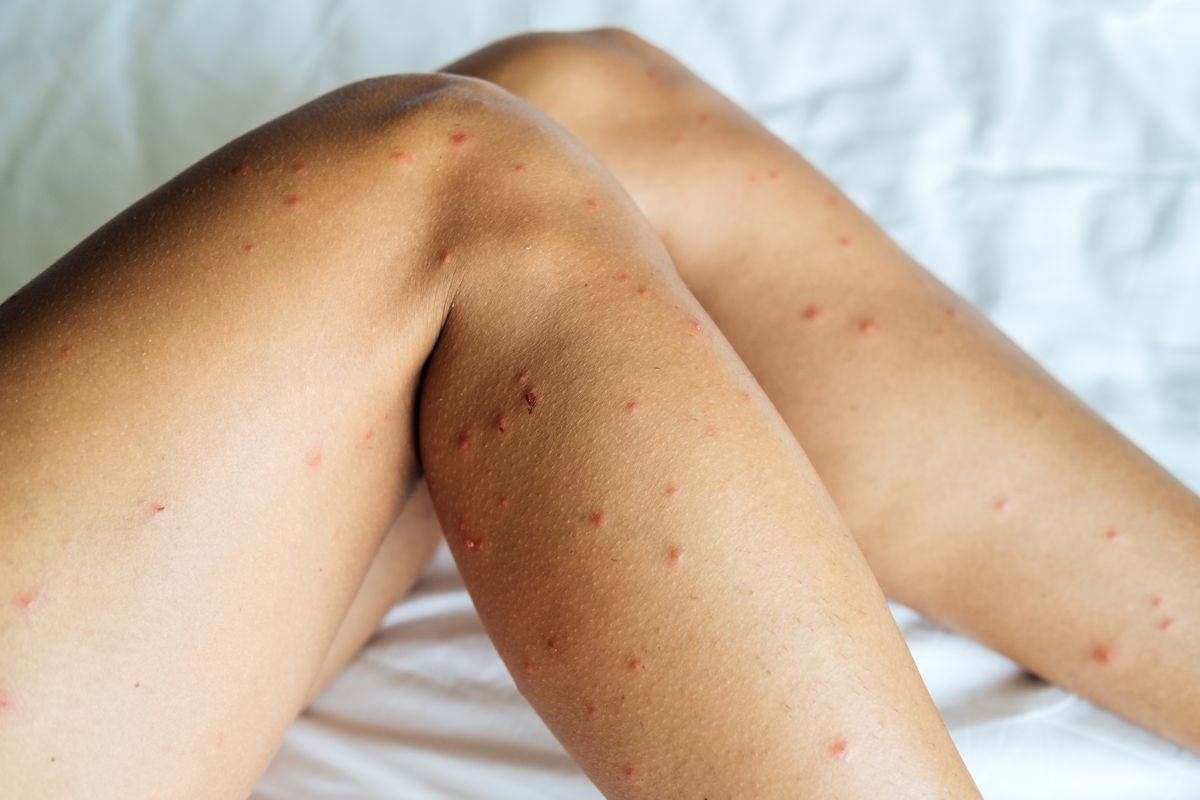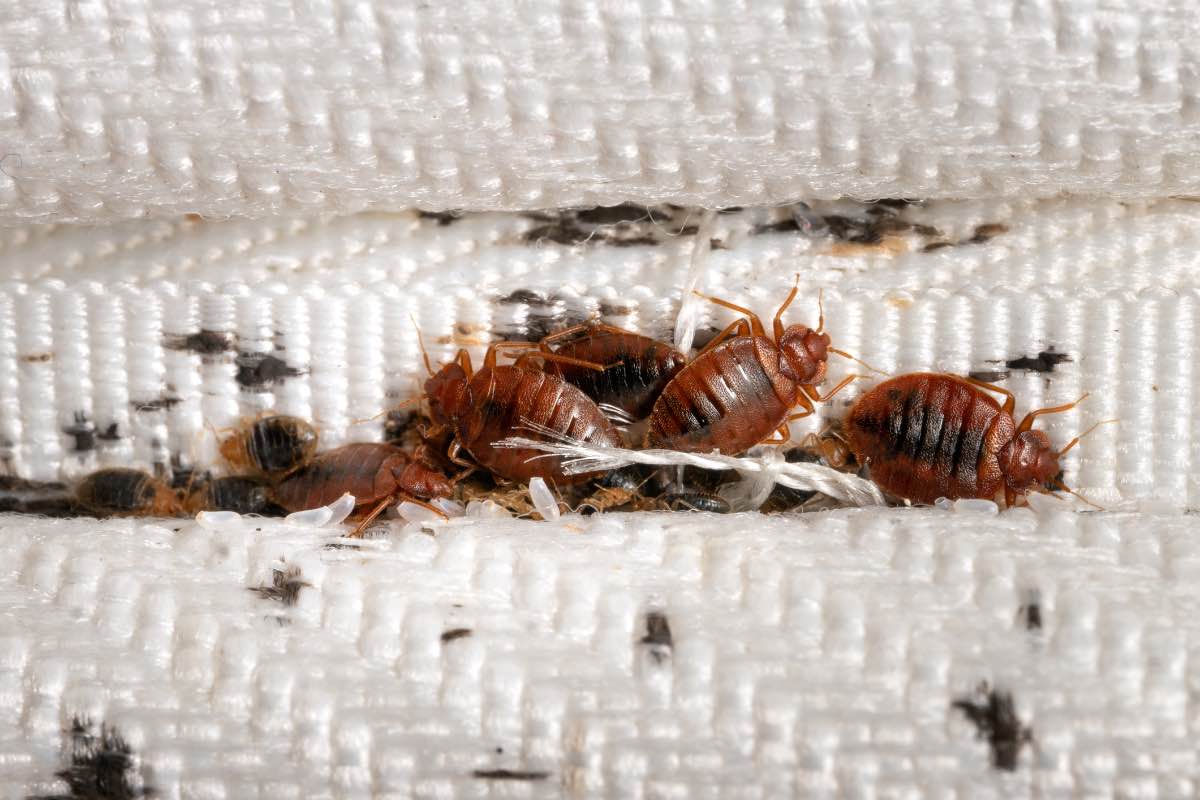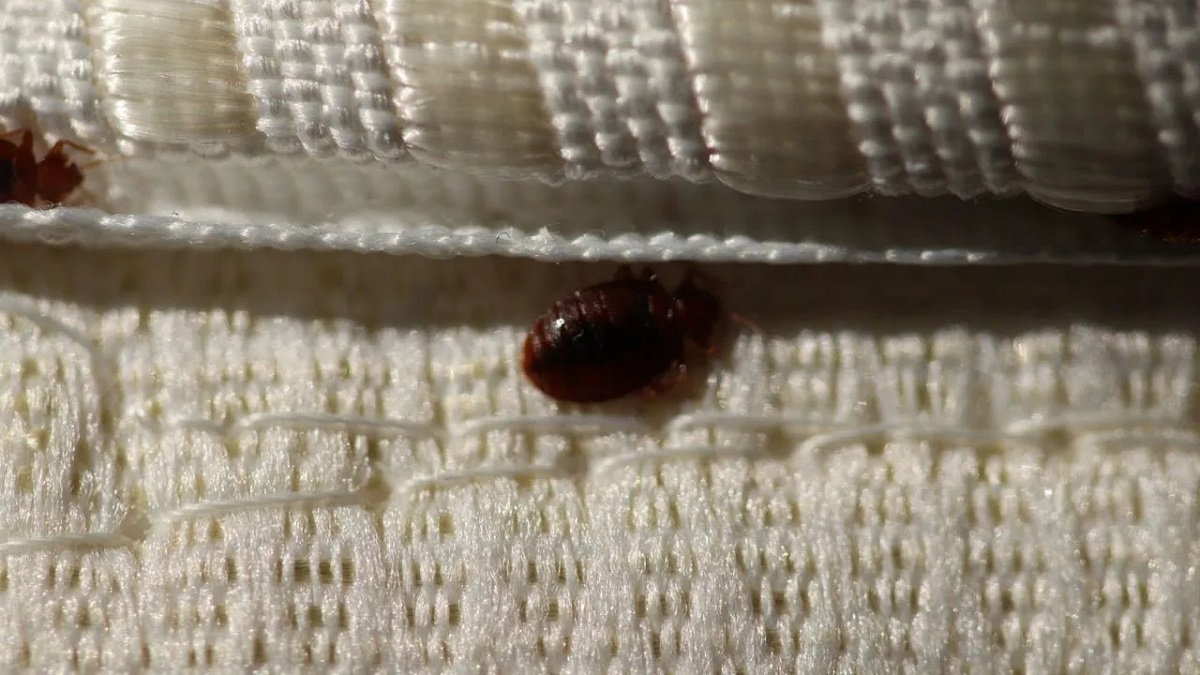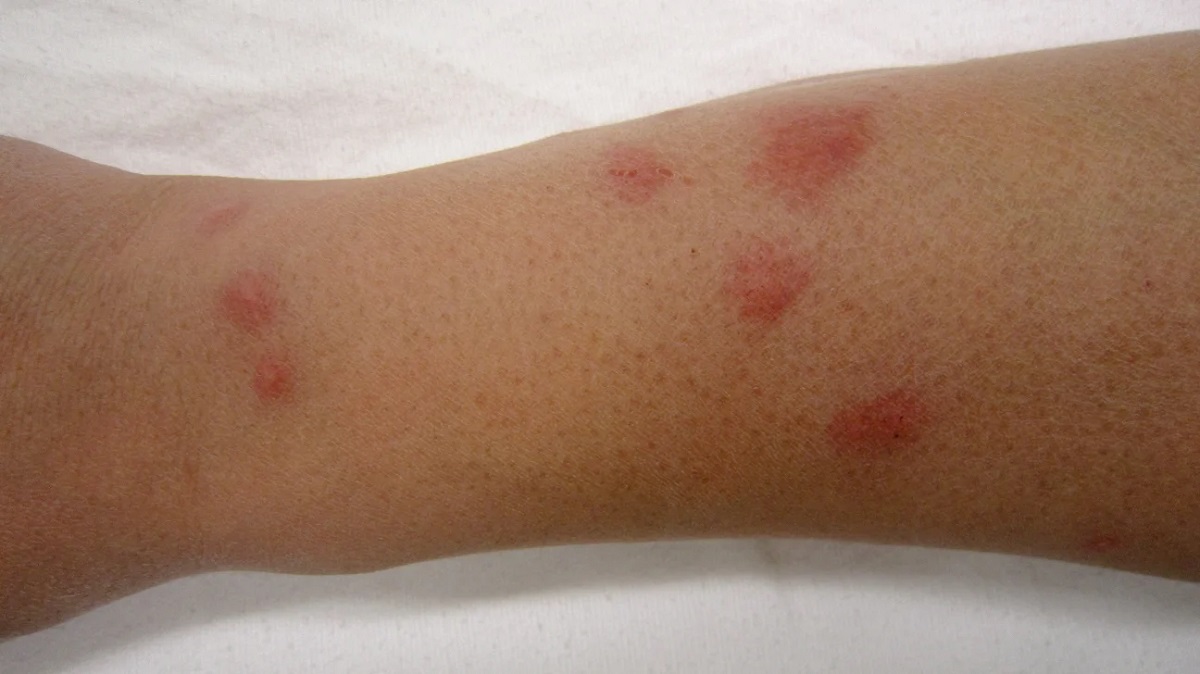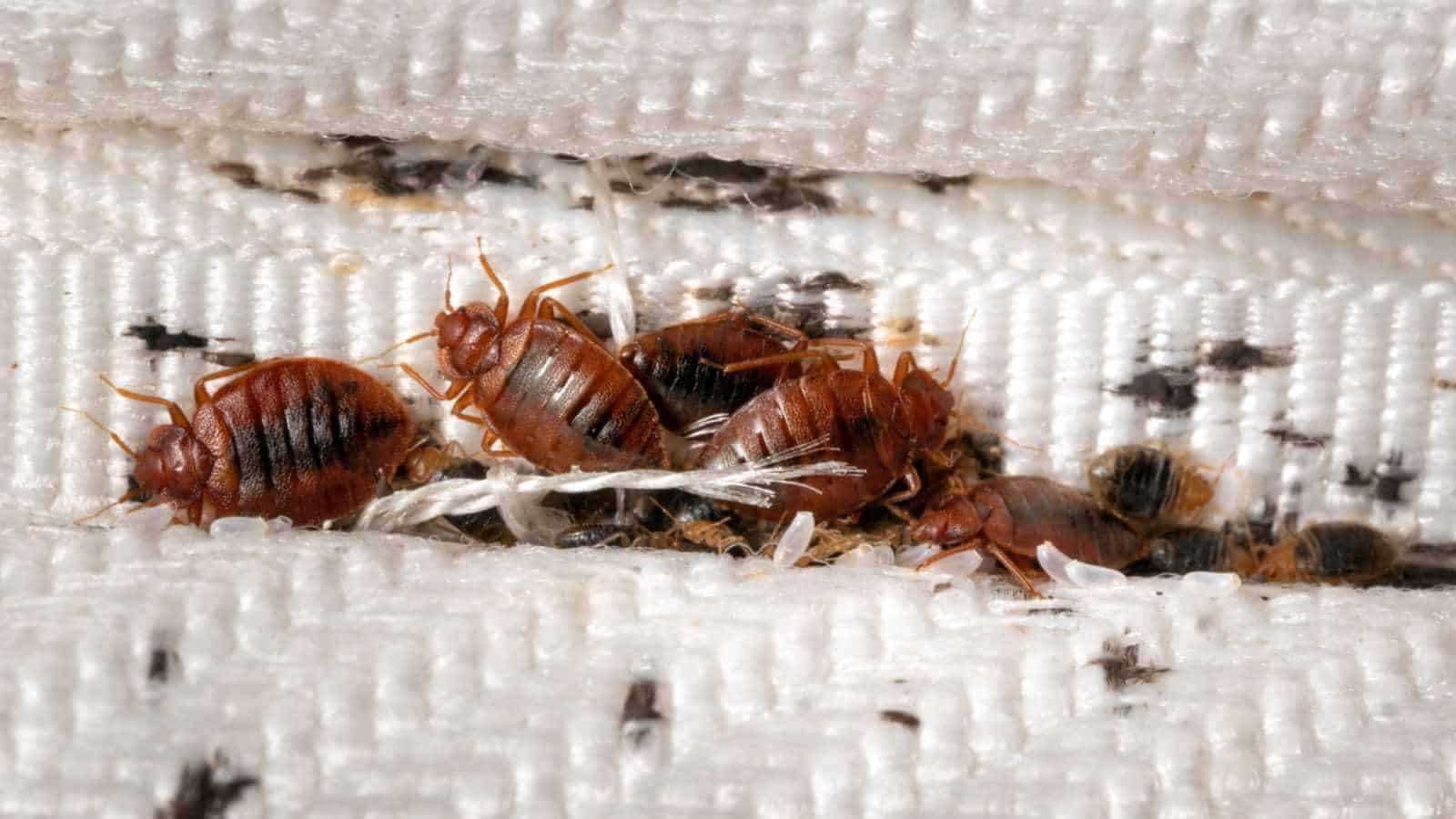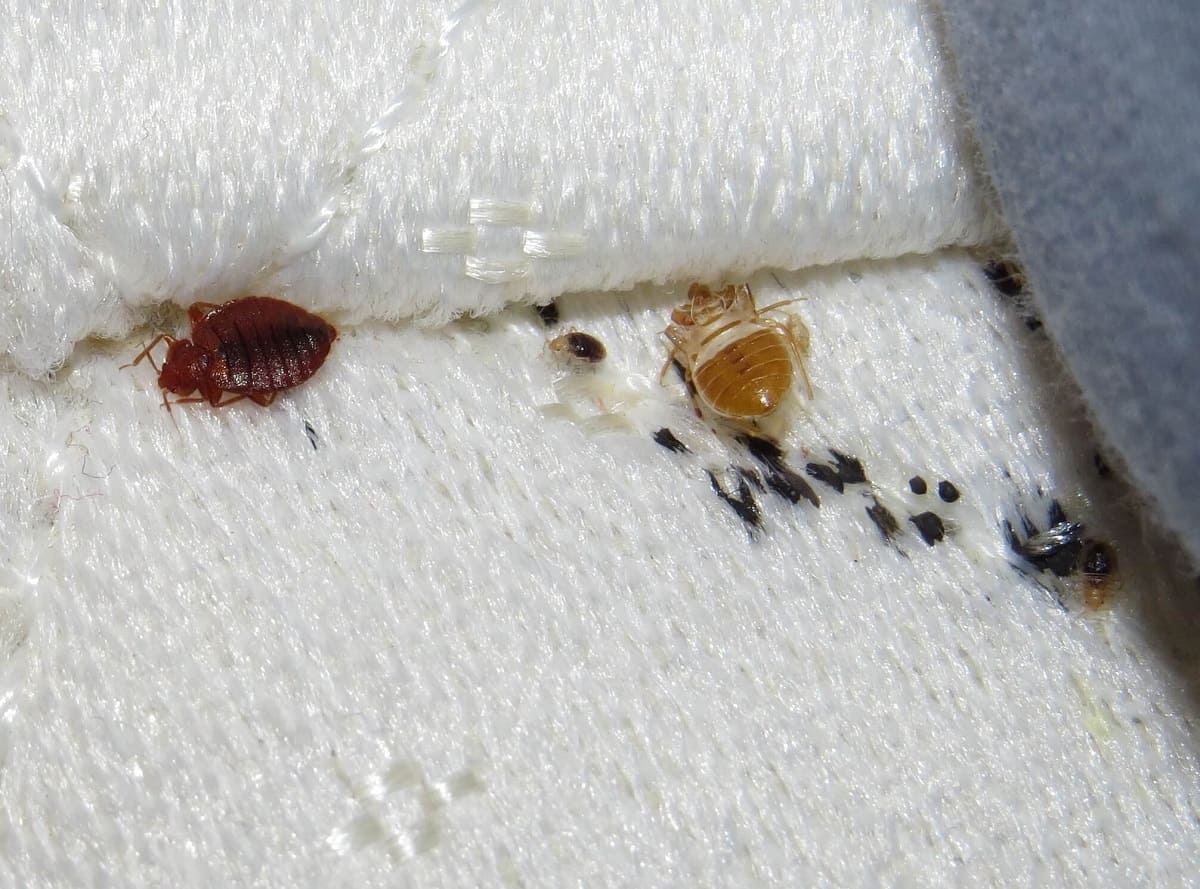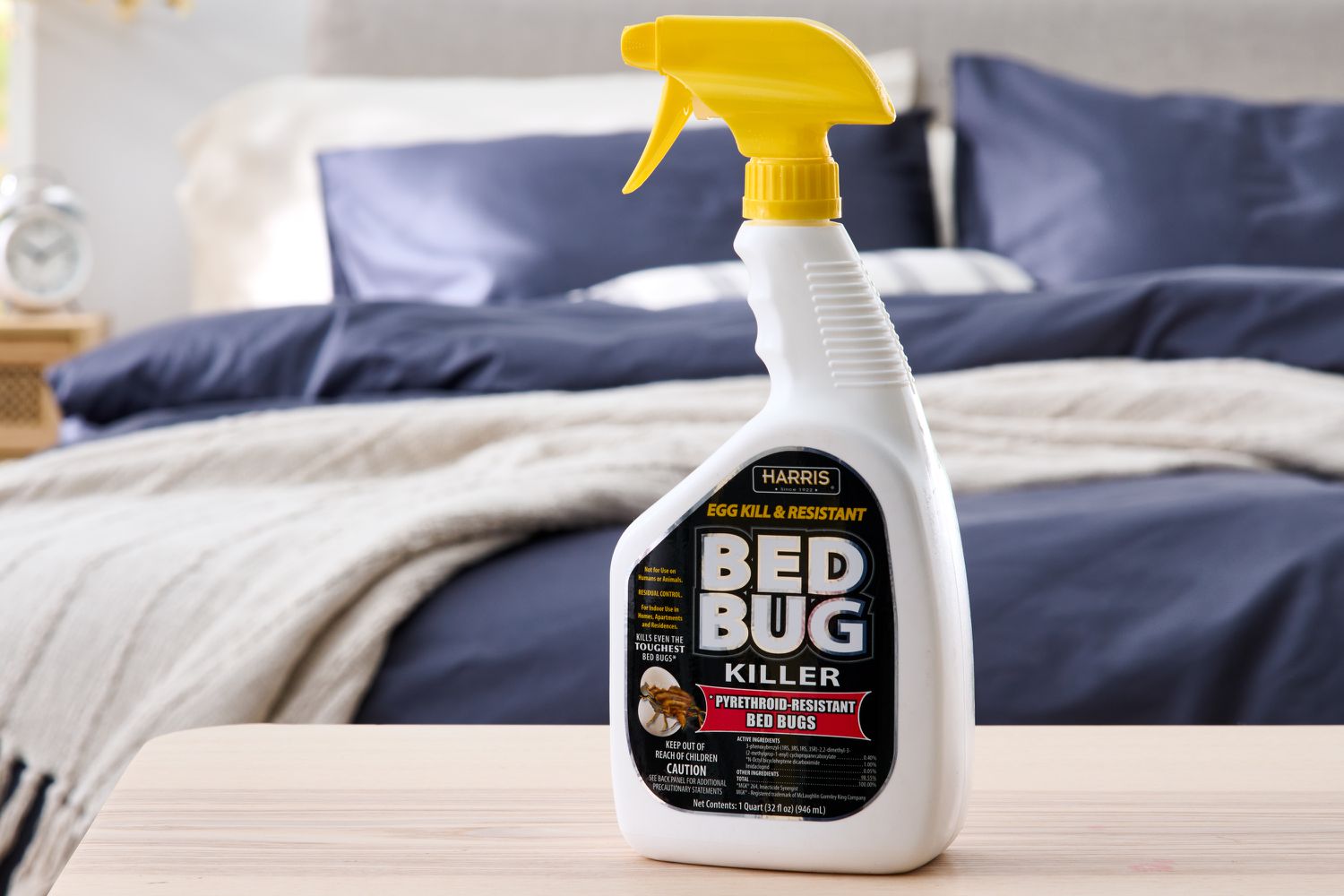Home>Furniture>Bedroom Furniture>What Causes Bed Bugs
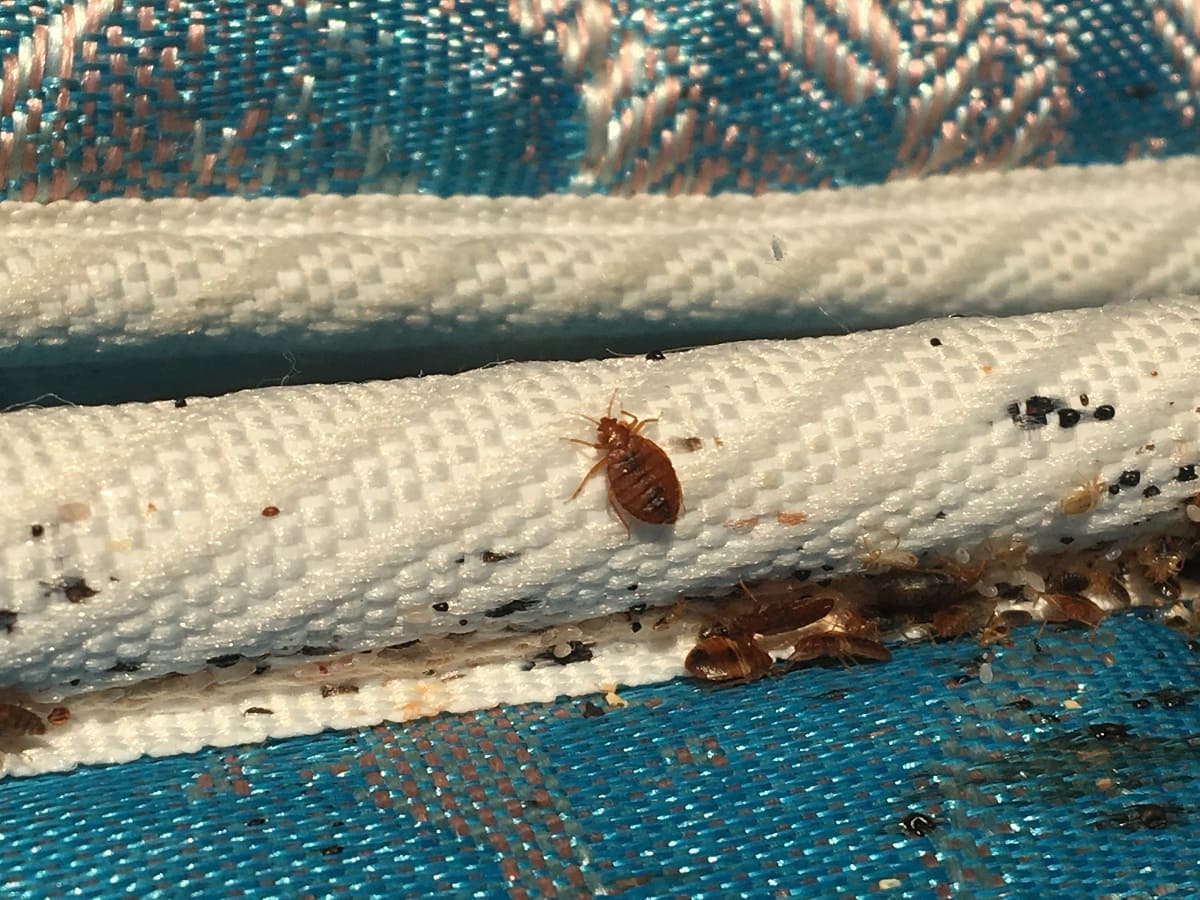

Bedroom Furniture
What Causes Bed Bugs
Modified: March 6, 2024
Discover the common causes of bed bugs in your bedroom furniture and learn how to prevent and eliminate these pesky insects.
(Many of the links in this article redirect to a specific reviewed product. Your purchase of these products through affiliate links helps to generate commission for Storables.com, at no extra cost. Learn more)
Introduction
Welcome to the comprehensive guide on bed bugs and their causes. If you’ve ever struggled with bed bugs infesting your bedroom, you know how frustrating and overwhelming it can be. These tiny insects can disrupt your sleep, leave itchy bites all over your body, and take a toll on your mental well-being.
But fear not, as this article will provide you with all the information you need to understand why bed bugs infest your bedroom and how to prevent and treat them effectively.
Bed bugs are small, oval-shaped insects that feed on the blood of humans and animals. Despite their name, they don’t just live in beds – they can infest any piece of furniture, cracks in the walls, or even luggage.
Understanding the life cycle of bed bugs is crucial in order to effectively manage an infestation. Bed bugs go through several stages of development, including eggs, nymphs, and adults. The nymphs resemble smaller versions of the adults but are lighter in color and lack wings. They molt several times before reaching adulthood.
There are several telltale signs that indicate a bed bug infestation. These include the presence of small brownish-red stains on bedding and furniture, tiny dark specks of fecal matter, discarded exoskeletons, and, of course, those dreaded itchy bites.
There are different species of bed bugs, but the most common one is the Cimex lectularius. These insects are adept at hitchhiking and can easily travel from one location to another through clothing, luggage, or furniture.
Now, let’s delve into the various causes of bed bug infestations. Understanding these causes will help you take effective measures to prevent them in the first place.
Key Takeaways:
- Don’t bring bed bugs home! Inspect second-hand items, be cautious when traveling, and regularly clean to prevent infestations. Early detection and professional help are crucial for effective treatment.
- Bed bugs can hitchhike! Be cautious with used furniture, shared spaces, and visitors. Regular monitoring and preventive measures can reduce the risk of infestations.
Read more: What Are Bed Bugs
Bed Bug Overview
Bed bugs are small, nocturnal insects that belong to the family Cimicidae. They are parasites that feed on blood and are primarily found in and around beds, hence their name. These pests have been a nuisance to humans for centuries, with infestations occurring in homes, hotels, dormitories, and other places where people sleep or rest.
Bed bugs are oval-shaped and about the size of an apple seed. They are flat, allowing them to hide in tiny cracks and crevices. Their bodies are reddish-brown in color, but they can appear darker or lighter after feeding on blood.
As mentioned earlier, bed bugs go through several life stages, including eggs, nymphs, and adults. The eggs are tiny, whitish, and difficult to spot with the naked eye. Nymphs are translucent and become darker as they feed. Adult bed bugs are about the size of an apple seed and have a distinct and unpleasant odor.
Bed bugs are ectoparasites, meaning they live on the outside of their hosts, rather than inside. They are attracted to body heat and carbon dioxide, which is why they tend to bite humans during sleep. Their bites can cause itching, redness, and swelling, and some individuals may experience allergic reactions.
Contrary to popular belief, bed bugs are not a sign of uncleanliness or poor hygiene. They can be found in both clean and dirty environments. Infestations can occur when bed bugs are introduced to a new location, whether it be through belongings, furniture, or even by hitching a ride on people.
One of the most challenging aspects of dealing with bed bugs is their ability to reproduce quickly. A female bed bug can lay hundreds of eggs in her lifetime, and the nymphs can reach adulthood in as little as a month. This rapid reproduction cycle makes it crucial to address infestations promptly to prevent them from spreading.
Now that we have a basic understanding of bed bugs, let’s explore the different life stages they go through in more detail.
Life Cycle of Bed Bugs
Understanding the life cycle of bed bugs is essential for effectively managing an infestation. These pests go through several stages of development, each with its own characteristics and behaviors.
The bed bug life cycle begins with the egg stage. Female bed bugs lay eggs in batches of about 1 to 5 eggs per day. These eggs are tiny, measuring about 1mm in length, and are often laid in hidden areas such as mattress seams, furniture cracks, or behind baseboards. Bed bug eggs are difficult to spot with the naked eye due to their small size and pale color.
After approximately 6 to 10 days, the eggs hatch into nymphs. Nymphs are small, translucent, and become darker in color as they feed on blood. They go through several molts, shedding their exoskeletons each time in a process called instar. There are five nymphal stages, known as instar 1 to instar 5, and each stage requires a blood meal to progress to the next.
As the nymphs mature, they become larger and darker in color. During each molting stage, they exhibit increased mobility and search for blood meals to sustain their growth. The time it takes for a nymph to reach adulthood depends on various factors, such as temperature, availability of food, and overall conditions. On average, it takes around 4 to 5 weeks for a nymph to develop into an adult.
Once the nymphs reach the fifth and final instar stage, they become adult bed bugs. Adult bed bugs are about the size of an apple seed and have a reddish-brown color. They have well-developed wings, but they do not fly. Like nymphs, adult bed bugs require regular blood meals to survive and reproduce.
Adult bed bugs can live for several months to over a year, depending on environmental conditions and access to food. During this time, they mate and the females lay eggs, continuing the life cycle of the bed bugs.
Understanding the life cycle of bed bugs is crucial because it helps in targeting and eliminating all stages of infestation. Treating only the adult bed bugs may not be enough, as the unhatched eggs and nymphs can lead to a resurgence of the infestation. Therefore, comprehensive treatment methods that target all life stages should be employed for effective control.
In the next section, we will discuss the common signs that indicate a bed bug infestation, helping you identify and address the problem promptly.
Common Signs of Bed Bug Infestation
Identifying the signs of a bed bug infestation early on is crucial for prompt and effective treatment. While bed bugs are small and elusive creatures, they leave behind several telltale signs of their presence. Here are some common signs to look out for:
- Bites on the skin: Bed bugs are nocturnal feeders, and their bites tend to appear in clusters or rows on exposed areas of the skin, such as the arms, legs, neck, and shoulders. The bites can cause itching, redness, and swelling and may develop into small blisters.
- Visible blood stains: After feeding, bed bugs can leave behind small blood stains on bedding, mattresses, or clothing. These stains may appear as small dots or smears and are typically brown or rust-colored.
- Fecal spots: Bed bugs excrete fecal matter after feeding, leaving behind small dark spots on bedding, mattresses, or furniture. These spots may resemble ink stains or tiny black specks and are often found in clusters.
- Shed skins: As bed bugs grow and molt through their nymphal stages, they shed their exoskeletons. These discarded shells are translucent and can be found near their hiding places, such as mattress seams, furniture cracks, or baseboards.
- Musty odor: Bed bugs release a distinct and unpleasant odor, often described as musty or sweet. This odor is typically more noticeable in severe infestations or in areas where bed bugs are densely populated.
- Visible bed bugs: In advanced infestations, you may be able to spot adult bed bugs crawling on bedding, furniture, or along carpet edges. However, due to their small size and ability to hide in crevices, spotting bed bugs can be challenging.
If you notice any of these signs, it is important to take immediate action to prevent the infestation from spreading and causing further discomfort. Bed bugs are prolific breeders, and even a small number of bugs can quickly multiply and infest an entire area.
It’s worth mentioning that bed bug bites are not always a reliable indicator of an infestation, as some people may not develop noticeable reactions to the bites. In such cases, identifying other signs, such as fecal spots or shed skins, becomes even more crucial.
In the next section, we will explore the different bed bug species commonly encountered and their distinguishing characteristics.
Common Bed Bug Species
When it comes to bed bugs, there are several different species within the Cimex genus. However, the two most common species that infest human homes are Cimex lectularius and Cimex hemipterus.
Cimex lectularius: This species, commonly known as the common bed bug, is found worldwide. Cimex lectularius has adapted well to human environments and is known for infesting homes, hotels, dormitories, and other places where people reside. They have a preference for human blood but can also feed on other warm-blooded animals if necessary. Cimex lectularius has a flattened body shape, reddish-brown color, and reaches a size of about 4 to 5 mm in adulthood.
Cimex hemipterus: Also known as the tropical bed bug, Cimex hemipterus is generally found in tropical and subtropical regions. It infests human dwellings but tends to be more prevalent in areas with a higher humidity level. This species also bites humans but is more inclined to feed on bats and birds. Cimex hemipterus is similar in appearance to Cimex lectularius, with a reddish-brown color and a flattened body structure.
Both of these bed bug species share similar habits and characteristics when it comes to infesting human environments. They have a high reproductive rate and can infest multiple areas within a home, including bedrooms, living rooms, and even furniture.
It’s important to note that while these two species are the most common, there are other species of bed bugs that may be encountered in specific regions or circumstances. These include species such as Cimex pilosellus, which is commonly found in bird nests, or Cimex adjunctus, which is often associated with bats.
Regardless of the species, the key to effectively managing a bed bug infestation is early detection and prompt action. Identifying the signs of an infestation and taking appropriate measures, such as contacting a pest control professional, can help mitigate the problem and prevent it from worsening.
Next, we will explore the various causes of bed bug infestation, shedding light on how these pesky insects find their way into our homes.
Read more: What Color Are Bed Bugs
Causes of Bed Bug Infestation
Bed bug infestation can happen to anyone, regardless of cleanliness or socioeconomic status. It’s crucial to understand the causes of these infestations to prevent them and take appropriate measures when necessary. Here are some common causes of bed bug infestations:
- Travel: One of the most common ways bed bugs are introduced into homes is through travel. Bed bugs are excellent hitchhikers and can easily latch onto luggage, clothing, or other belongings. Staying in infested hotels, using public transportation, or visiting places with known bed bug problems can increase the risk of bringing bed bugs back home.
- Used furniture and clothing: Buying second-hand furniture or clothing without proper inspection can also lead to bed bug infestations. Bed bugs can hide in cracks, crevices, and seams of used items, waiting to be transported to a new environment.
- Visitors: Infestations can occur when friends, family members, or other guests unknowingly bring bed bugs into your home. It’s important to remember that bed bugs are not a sign of poor hygiene, and anyone can inadvertently introduce them into their living space.
- Shared spaces: Living in multi-unit buildings such as apartments, condos, or dormitories increases the risk of bed bug infestations. People coming and going from different places can inadvertently bring bed bugs into shared spaces, which can then spread to neighboring units.
- Neglected or adjoining properties: Bed bugs are adept at traveling through cracks and crevices, allowing them to move between adjoining properties. If a neighboring unit or nearby property has a bed bug infestation that is not promptly addressed, it can easily spread to your home.
- Poor pest control practices: Inadequate pest control measures can contribute to bed bug infestations. If an infestation is not detected and treated early on, it can escalate and spread throughout a home or building.
It’s important to be proactive in preventing bed bug infestations by taking precautions when traveling, inspecting used items before bringing them into your home, and regularly monitoring your living space for any signs of bed bugs.
In the next section, we will explore the factors that can increase the likelihood of a bed bug infestation.
To prevent bed bugs, regularly inspect and vacuum your home, including mattresses and furniture. Wash and dry bedding on high heat to kill any potential bed bugs.
Factors that Increase Bed Bug Infestation
While bed bugs can infest any home or establishment, there are certain factors that can contribute to an increased risk of infestation. Understanding these factors can help you be more vigilant and take necessary precautions. Here are some factors that can increase the likelihood of a bed bug infestation:
- High population density: Areas with high population density, such as urban regions or crowded apartment complexes, provide more opportunities for bed bugs to spread. The close proximity of people increases the chances of bed bugs being introduced and moving between spaces.
- Transient populations: Areas that have a high turnover of residents, such as hotels, hostels, or college dormitories, are particularly susceptible to experiencing bed bug infestations. The constant influx of new individuals makes it easier for bed bugs to hitch a ride and establish new infestations.
- Lack of awareness: Many people are not familiar with the signs and behaviors of bed bugs, which can contribute to the spread of infestations. Without knowing what to look for, it becomes difficult to detect and respond to bed bug problems in a timely manner.
- Poor sanitation practices: While bed bugs do not solely rely on cleanliness to infest an area, clutter and poor sanitation practices can provide conducive environments for them to hide and reproduce. Excess clutter makes it harder to identify and treat bed bug infestations effectively.
- Insufficient pest control measures: Inadequate pest control practices, including improper inspection and treatment methods, can contribute to the spread and persistence of bed bug infestations. If an infestation is not addressed comprehensively, it can quickly reoccur and affect multiple areas.
- Resistance to pesticides: Over time, bed bugs have developed resistance to some pesticides, making them more difficult to eradicate. This resistance can prolong infestations and require the use of alternative treatment methods or professional pest control services.
It’s important to note that even with these factors present, bed bug infestations can happen to anyone. By staying vigilant, practicing good hygiene, and taking proactive measures to prevent infestations, you can reduce the risk and potential impact of bed bugs in your home or establishment.
Next, we will explore common sources of bed bug infestation, helping you identify potential entry points for these unwanted pests.
Common Sources of Bed Bug Infestation
Bed bugs are elusive pests that can enter your home from various sources. Understanding these common sources can help you identify potential entry points and take preventative measures. Here are some of the most common sources of bed bug infestation:
- Travel: One of the primary sources of bed bug infestation is travel. When staying in hotels, hostels, or other accommodations, bed bugs can hitch a ride on your luggage, clothing, or personal belongings. They can also be transferred from public transportation, such as planes, buses, or trains.
- Second-hand furniture and clothing: Buying used furniture, especially mattresses and upholstered items, can introduce bed bugs into your home. Bed bugs can hide in cracks, crevices, or seams of used items and be unknowingly brought into your living space.
- Visitors: Friends, family members, or guests visiting your home can inadvertently bring bed bugs with them. Their luggage, clothing, or personal belongings may be infested, and the bugs can easily transfer to your furniture or bedding.
- Shared spaces: Living in shared spaces such as apartments, dormitories, or multi-unit buildings can increase the risk of bed bug infestations. If a neighboring unit or shared area has an infestation, bed bugs can easily travel through walls, cracks, or electrical sockets to reach your living space.
- Neglected properties: Bed bugs can originate from neighboring properties that are neglected or have untreated infestations. If these properties have easy access points or if there are shared walls or common areas, the bugs can easily spread to your home.
- Laundry facilities: Shared laundry facilities can also be a source of bed bugs. If an infested item, such as bedding or clothing, is placed into the dryer or used washing machines, the bugs can spread to other items being processed.
- Public spaces: Public spaces, such as movie theaters, offices, libraries, or public transportation, can also harbor bed bugs. These insects can crawl into bags, purses, or clothing, and be transported to your home without you realizing it.
It’s important to be cautious and take preventive measures to avoid bringing bed bugs into your home. Inspecting second-hand items before bringing them inside, being vigilant during travel and hotel stays, and regularly monitoring your living space for signs of infestation are all crucial steps in preventing bed bug infestations.
In the next sections, we will explore effective bed bug prevention techniques and available treatment options.
Bed Bug Prevention Techniques
While it’s challenging to completely eliminate the risk of bed bug infestations, there are several preventive measures you can take to reduce the likelihood of an unwelcome encounter with these pests. Here are some effective bed bug prevention techniques:
- Inspect second-hand items: Before bringing used furniture, mattresses, or clothing into your home, thoroughly inspect them for any signs of bed bugs. Focus on seams, cracks, and crevices where these pests can hide.
- Be cautious when traveling: When staying in hotels or other accommodations, perform a quick inspection of the room for any signs of bed bugs. Lift mattress corners, check behind headboards, and examine upholstered furniture. Keep your luggage off the floor and use luggage racks or elevated surfaces.
- Protect your mattress: Use mattress encasements designed specifically to prevent bed bugs. These encasements create a barrier that prevents bed bugs from entering or escaping your mattress.
- Regularly clean and declutter: Reduce hiding spots for bed bugs by regularly cleaning and decluttering your home. Vacuum carpets, upholstery, and baseboards, paying extra attention to cracks and crevices. Dispose of any clutter that may serve as potential hiding places.
- Seal cracks and crevices: Seal any cracks and crevices in walls, floors, or furniture to prevent bed bugs from hiding and harboring in these spaces. Use caulk or other appropriate sealants to close off potential entry points.
- Be cautious with shared spaces: If you live in a shared space, such as an apartment or dormitory, be vigilant about reporting and addressing any signs of bed bugs to building management. Cooperate with neighbors and take collective action to prevent infestations from spreading.
- Use caution with laundry: When using shared laundry facilities, keep your items in sealed bags until they are ready to be washed and dried. Be mindful of placing your items directly on contaminated surfaces, such as folding tables or countertops.
- Inspect after guests: If you have guests staying in your home, particularly if they have recently traveled or have had previous bed bug issues, inspect the guest room and surrounding areas for signs of bed bugs after their departure.
- Regularly monitor your home: Keep an eye out for any signs of bed bugs in your home, such as blood stains, fecal spots, shed skins, or the bugs themselves. Early detection can help prevent a minor infestation from becoming a major problem.
By implementing these preventive measures, you can significantly reduce the chances of a bed bug infestation in your home. However, even with the best prevention practices, it is important to remember that bed bugs can still find their way into your living space. In such cases, prompt and effective treatment is essential.
In the next section, we will explore the treatment options available for dealing with bed bug infestations.
Read more: What Attracts Bed Bugs
Bed Bug Treatment Options
Dealing with a bed bug infestation can be challenging, but there are several treatment options available to effectively eliminate these pests. The choice of treatment will depend on the extent of the infestation and the specific circumstances. Here are some common bed bug treatment options:
- Professional pest control: Hiring a professional pest control service is often the most effective and efficient way to eliminate a bed bug infestation. Pest control professionals have the knowledge, experience, and access to specialized treatments and techniques to target bed bugs at all stages of their life cycle.
- Chemical treatments: Professional pest control companies may use insecticides to treat bed bug infestations. These insecticides are applied to infested areas and furnishings, targeting bed bugs and their eggs. It’s essential to follow the instructions provided by the professionals and take necessary precautions to ensure safety.
- Heat treatments: Heat treatments involve using specialized equipment to raise the temperature of the infested space to a level that is lethal to bed bugs. This method can effectively kill bed bugs and their eggs, even in hard-to-reach areas. Professional expertise is required to ensure proper execution and prevent any damage to the property.
- Steam treatments: Steam treatments involve using a high-temperature steam cleaner to treat infested areas and items. The steam penetrates cracks, crevices, and upholstery, killing bed bugs on contact. It’s important to ensure that the steam reaches the necessary temperature to be effective.
- Vacuuming and cleaning: Thoroughly vacuuming infested areas, along with regular cleaning, can help reduce the number of bed bugs and remove their eggs. Be sure to use a vacuum cleaner with a HEPA filter to prevent bed bugs from escaping and empty the contents of the vacuum in a sealed bag immediately.
- Encasements: Using mattress and box spring encasements can help protect your bed from future infestations. These encasements create a barrier that prevents bed bugs from infesting your bedding, and any existing bugs trapped inside will eventually die.
- Decluttering and sealing cracks: Removing clutter and sealing cracks and crevices in your home can minimize hiding places for bed bugs, making it easier to detect and treat infestations. Use caulk or sealant to seal cracks in walls, floors, and furniture.
- Home remedies: While there are various home remedies and DIY treatments suggested for bed bug control, their effectiveness is often limited or inconsistent. It’s crucial to exercise caution when using these methods and consult professionals for comprehensive treatment.
It’s important to note that in some cases, a combination of multiple treatment methods may be necessary to achieve complete eradication. Additionally, ongoing monitoring and preventive measures should be practiced even after treatment to prevent future infestations.
If you’re dealing with a bed bug infestation, it’s recommended to consult with a professional pest control service to assess the situation and determine the most suitable treatment plan for your specific needs.
Finally, let’s conclude our comprehensive guide on bed bug infestations.
Conclusion
Dealing with a bed bug infestation can be a stressful and frustrating experience. However, by understanding the causes, signs, and prevention techniques, you can effectively manage and prevent these unwelcome pests from invading your home.
We explored the basics of bed bugs, including their physical characteristics and life cycle. We discussed common signs of infestation, such as bites, blood stains, fecal spots, shed skins, and the bugs themselves. By learning to recognize these signs, you can take immediate action and prevent the infestation from escalating.
Furthermore, we discussed common bed bug species and the factors that can contribute to increased infestation risks, such as high population density, transient populations, poor sanitation practices, and inadequate pest control measures. Understanding these factors can help you mitigate the risks and be proactive in preventing infestations.
We also provided a variety of bed bug prevention techniques, including inspecting second-hand items, being cautious during travel, protecting your mattress, regular cleaning and decluttering, sealing cracks and crevices, and being cautious with shared spaces. These preventive measures can greatly reduce the likelihood of bed bug infestations in your home.
In the event of an infestation, we discussed various treatment options, including professional pest control, chemical treatments, heat treatments, steam treatments, vacuuming and cleaning, encasements, and decluttering. Choosing the right treatment approach depends on the severity of the infestation and professional advice is highly recommended.
Remember, early detection and prompt action are key to effectively dealing with bed bug infestations. Regularly monitor your living spaces and take preventive measures to minimize the risks. If you do encounter an infestation, do not hesitate to seek professional assistance.
By incorporating these strategies and techniques, you can rest assured that you are well-equipped to tackle bed bug infestations and protect your home and loved ones from these persistent pests.
Thank you for joining us on this comprehensive journey to understand and combat bed bugs. May your nights be peaceful and bed bug-free!
Frequently Asked Questions about What Causes Bed Bugs
Was this page helpful?
At Storables.com, we guarantee accurate and reliable information. Our content, validated by Expert Board Contributors, is crafted following stringent Editorial Policies. We're committed to providing you with well-researched, expert-backed insights for all your informational needs.
